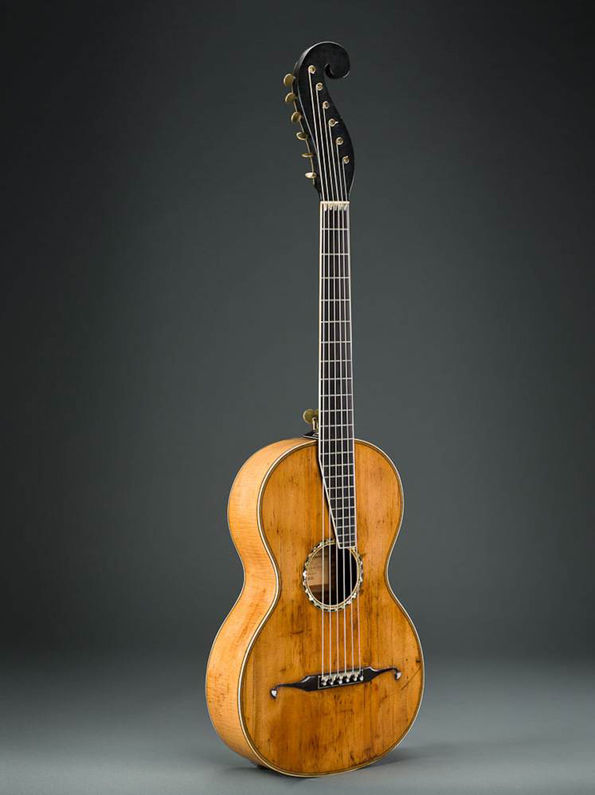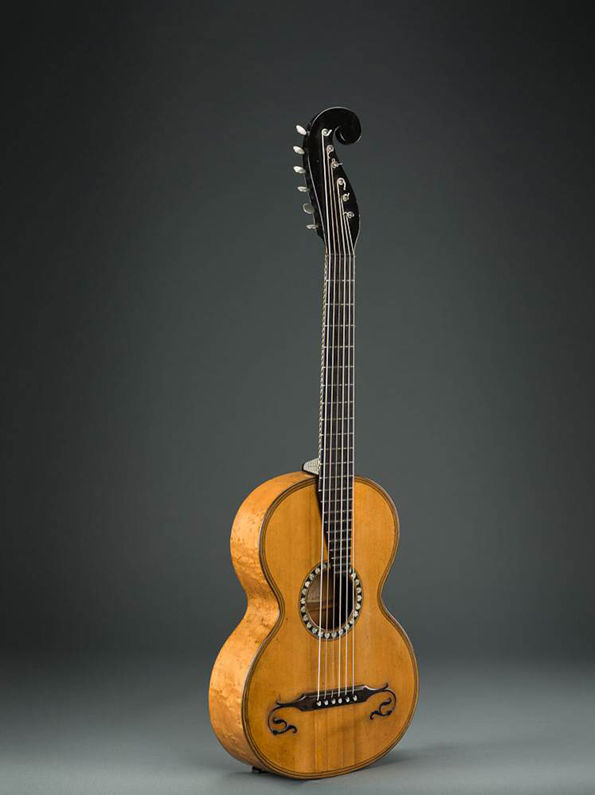http://www.metmuseum.org/about-the-museum/museum-departments/curatorial-departments/musical-instruments/of-note/2014/cf-martin

 As a German immigrant, Martin used his connections within the German community to establish himself in New York. The population of German immigrants and German-Americans was already more than twenty-four thousand in 1840, a number that exploded over the next two decades: By 1855, New York City boasted the third largest population of German-speakers in the world, ranked only behind Berlin and Vienna.
As a German immigrant, Martin used his connections within the German community to establish himself in New York. The population of German immigrants and German-Americans was already more than twenty-four thousand in 1840, a number that exploded over the next two decades: By 1855, New York City boasted the third largest population of German-speakers in the world, ranked only behind Berlin and Vienna.

Christian Frederick Martin (American, 1796–1873). Guitar, ca. 1834. Spruce, maple, ebony, ivory, mother of pearl, mastic. The Personal Collection of C. F. Martin IV. Photo by John Sterling Ruth, courtesy of the Martin Museum
The exhibition Early American Guitars: The Instruments of C. F. Martin, on view through December 7, brings together more guitars by Christian Frederick Martin (1796–1873) than have ever been publicly exhibited before. Among the many treasures that can be seen in this exhibit is the earliest known guitar built by Martin. The instrument (above) was built around 1834, at which point Martin was working in his New York City workshop at 196 Hudson Street, an area of the city now known as Tribeca, near the Holland Tunnel. In that shop he repaired instruments, sold musical items that he imported from Germany, and both built and sold his own guitars.
At the time Martin arrived, New York City was booming, thanks largely to the opening of the Erie Canal in 1825. However, its musical life was far removed from what it would become even a few decades later: the predecessor orchestra of the New York Philharmonic (the oldest symphony orchestra in the country) was founded in 1842; the Metropolitan Opera organized in 1880; and Carnegie Hall opened its doors in 1891. Martin himself had already moved his operations to Nazareth, Pennsylvania, well before Henry Steinway—the instrument manufacturer perhaps most closely associated with New York—arrived from Braunschweig, Germany, in 1850 to build pianos.
Martin was born in Markneukirchen, Saxony, a town that was renowned as a center for musical instrument making. He was the son of Johann Georg Martin, a furniture maker who was also known to have built a few guitars. Christian Frederick spent some time in Vienna and would later claim to have been a "pupil" of the guitar builder Johann George Stauffer, although there is no documented evidence to support this claim. Martin married Ottile Kühle, daughter of the Viennese guitar builder Karl Kühle, in 1825, and then returned to Markneukirchen to begin building guitars. He found himself caught between the violin-making and furniture-making guilds, both of whom wanted to control the growing market for guitars. Perhaps influenced by his friend Heinrich Schatz, a guitar builder active in Pennsylvania, Martin ultimately decided to move to the United States in 1833.
 As a German immigrant, Martin used his connections within the German community to establish himself in New York. The population of German immigrants and German-Americans was already more than twenty-four thousand in 1840, a number that exploded over the next two decades: By 1855, New York City boasted the third largest population of German-speakers in the world, ranked only behind Berlin and Vienna.
As a German immigrant, Martin used his connections within the German community to establish himself in New York. The population of German immigrants and German-Americans was already more than twenty-four thousand in 1840, a number that exploded over the next two decades: By 1855, New York City boasted the third largest population of German-speakers in the world, ranked only behind Berlin and Vienna.
Martin's earliest guitars are similar to those of Viennese makers, especially the "Legnani" model guitars—named for the Italian virtuoso Luigi Legnani—of Johann Georg Stauffer. The 1834 Martin exhibits many of the Viennese features, including the scroll-style headstock with in-line tuners off to one side. The fingerboard is raised above the body of the instrument, and the neck can be adjusted by use of a clock-key. The guitar has a spruce top, with the back and sides made of maple. The strings terminate in a moustache bridge with pins holding the strings in place.
Left: Johann Georg Stauffer (Austrian, 1778–1853) and Johann Anton Stauffer (Austrian, 1805–1871). Terz Guitar, "Legnani" Model, ca. 1828–30. Spruce, maple, ivory, ebony, mother-of-pearl, mastic. The Collection of Peter Szego. Photo by John Sterling Ruth, courtesy of the Martin Museum
The 1830s were a tumultuous time in New York City. The city erupted in anti-abolitionist riots in July of 1834, and the nearby Laight Street Presbyterian Church—as well as the home of its pastor, Samuel Hanon Cox—was targeted and vandalized during several days of rioting. The church was a mere two blocks from the Martin shop. The Great Fire of 1835 destroyed seventeen city blocks, and perhaps as many as seven hundred buildings, on December 16, and many New Yorkers soon moved their homes and businesses farther uptown to the area around Martin's workshop. Then, in May 1837, a financial panic hit, throwing the city and the nation into a years-long recession. It's no surprise then that C. F. Martin and his family left New York City and chose to settle in the German community of Nazareth, Pennsylvania, which reminded them of their home region of Saxony. New York continued as an important business center for Martin's company, though, with the city name stamped on its guitars even after C. F. Martin's death in 1873.
Follow Jayson on Twitter: @JayKerrDobney
FUENTE: http://www.metmuseum.org/about-the-museum/museum-departments/curatorial-departments/musical-instruments/of-note/2014/cf-martin










_21.10.59.png)


